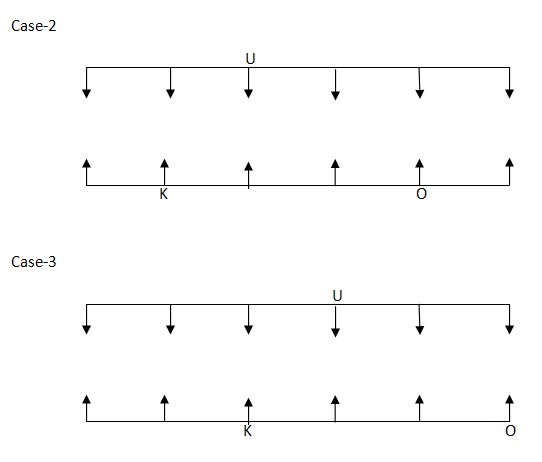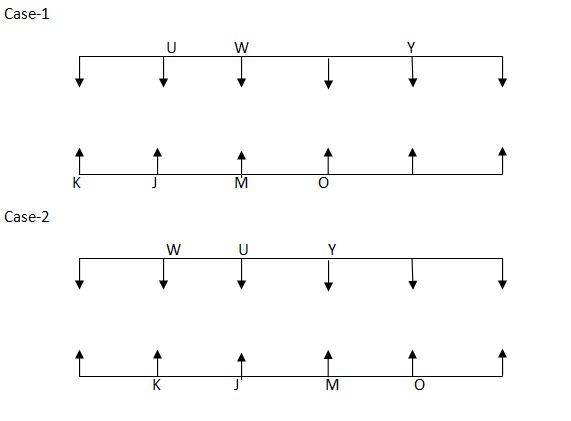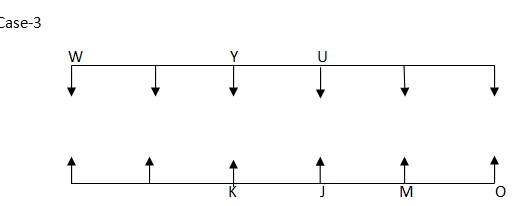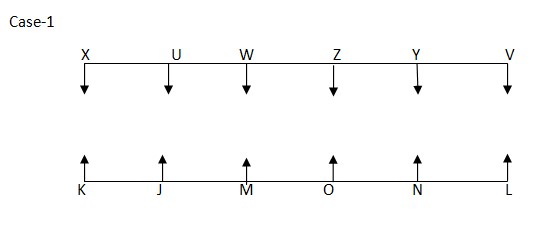Question
If all the persons in row 1 are arranged in alphabetical
order from the right end, then who among the following person sits opposite to M? Study the following information carefully and answer the below questions Twelve persons are sitting in a parallel row and opposite to each other. In row1- U, V, W, X, Y, and Z face the south. In row2- J, K, L, M, N and O face the north but not necessarily in the same order. U sits opposite to the one who sits second to the left of O. Only two persons sit between K and O. K sits to the left of O. The number of persons sits to the left of U is the same as the number of persons sit to the right of Y. W sits second to the right of Y. J sits immediate left of M, none of them sits at end of the row. L sits opposite to the one who sits second to the left of Z. X and Y are not immediate neighbours.Solution
We have, U sits opposite to the one who sits second to the left of O. Only two persons sit between K and O. K sits to the left of O. From the above condition, there are three possibilities. 
 Again we have, The number of persons sit to the left of U is the same as the number of persons sits to the right of Y. W sits second to the right of Y. J sits immediate left of M, none of them sits at end of the row.
Again we have, The number of persons sit to the left of U is the same as the number of persons sits to the right of Y. W sits second to the right of Y. J sits immediate left of M, none of them sits at end of the row. 
 Again we have, L sits opposite to the one who sits second to the left of Z. X and Y are not immediate neighbours. From the above condition, case2 and case3 get eliminated. Case1 shows the final arrangement.
Again we have, L sits opposite to the one who sits second to the left of Z. X and Y are not immediate neighbours. From the above condition, case2 and case3 get eliminated. Case1 shows the final arrangement. 
According to the Forbes List 2022, which athlete has topped the list of highest paid athletes?
Which of the following public sector bank has announced to finance 1000 entrepreneurs in Nagaland through a partnership with Business Association?
Which sportsperson has won the gold medal in the men's shot put event of the AFI National Throws Competition?
Which real estate developer was awarded as the "Emerging Developer of the Year"?
The Organisation for Economic Cooperation and Development (OECD) has revised upwards its growth estimate for India by 20 basis points to _______for FY24.
Who has been re- appointed as the Managing Director of the International Monetary Fund ( IMF) ?
Tribal Affairs Ministry to organize two-days’ capacity building programme for EMRS teachers for Future Engineer Program in collaboration with which e-...
What was the growth percentage in Gross Direct Tax collections for the Financial Year 2023-24 as of March 17, 2024?
Which Indian state announced a quota for Agniveers in the State police force and other forces like prison and forest guards?
Recently it was announced that the e-Shram portal is going to be integrated with which of the following schemes?
Relevant for Exams:


